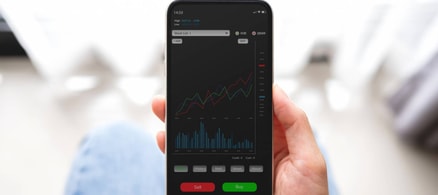Debt yield as a fundamental metric
Debt yield is a fundamental financial metric used to assess the risk associated with a property's debt and how a property could generate cash flow to service its debt obligations. Debt yield is expressed as a percentage that represents the projected return a lender or investor can expect from the property.
At its core, debt yield safeguards lenders and investors. A higher amount indicates that the property generates sufficient income to comfortably service its debt, which reduces risk for lenders and makes the investment more attractive.
Conversely, a lower debt yield suggests that the property's income may fail to cover its debt, a yellow flag for lenders and investors.
Debt yield is a popular measure because it is simple to understand and easy to calculate: Simply divide a property’s net operating income (NOI) by the total loan amount. This straightforward formula allows for swift comparisons of investment options.
Moreover, debt yields offer a comprehensive risk assessment for investors who want to gauge a property's financial stability. Higher debt yields signify a robust cash flow potential, which reduces the risk of loan default and increases the likelihood of profit.
In today's dynamic real estate market, risk management is paramount and debt yields have become invaluable among investors looking to broaden their investment strategy and diversify their portfolios. The popularity of debt yield analysis only stands to grow as savvy investors leverage it to navigate the complexities of real estate investing.
Meet Your Retirement Goals Effortlessly
The road to retirement may seem long, but with WiserAdvisor, you can find a trusted partner to guide you every step of the way
WiserAdvisor matches you with vetted financial advisors that offer personalized advice to help you to make the right choices, invest wisely, and secure the retirement you've always dreamed of. Start planning early, and get your retirement mapped out today.
Get StartedHow to calculate debt yield
Debt yield equals net operating income (NOI) divided by the loan amount.
Let’s define some terms: Net operating income refers to the property's annual income after deducting operating expenses – but before accounting for loan payments and income taxes. Loan amount represents the total amount of debt borrowed to finance the property.
A debt yield example
Let’s apply the formula to calculate the debt yield for a commercial property with an NOI of $500,000 and a loan amount of $6,000,000:
Debt Yield = $500,000 / $6,000,000 = 0.0833 or 8.33% so in this scenario, the property's debt yield is 8.33%.
Let's look at another hypothetical example:
The Acme Real Estate Investment Company wants to purchase an office building valued at $20 million. After thorough research, they find the property has an NOI of $1,000,000 annually. To finance the acquisition, ABC Real Estate secures a loan of $10 million.
Debt Yield = $1,000,000 / $10,000,000 = 0.10 or 10%.
In this example, the debt yield for the office building investment is 10%.
Stop overpaying for home insurance
Home insurance is an essential expense – one that can often be pricey. You can lower your monthly recurring expenses by finding a more economical alternative for home insurance.
SmartFinancial can help you do just that. SmartFinancial’s online marketplace of vetted home insurance providers allows you to quickly shop around for rates from the country’s top insurance companies, and ensure you’re paying the lowest price possible for your home insurance.
Explore better ratesHow lenders use debt yield
Real estate lenders provide the necessary capital for property acquisitions and developments. To fill that valuable role, they leverage debt yield to evaluate investment risk this way:
Risk assessment: Lenders set a minimum acceptable debt yield threshold based on their risk tolerance and market conditions. Properties with a debt yield above the threshold are considered less risky, making them more likely to qualify for a loan, while those below have a greater chance of loan denial.
Loan structuring: Debt yield helps lenders determine appropriate loan terms. Higher yields motivate lenders to offer more favorable loan terms, such as lower interest rates or longer repayment periods.
Comparing investment opportunities: Debt yield helps investors compare investment opportunities. Those with the strongest potential to generate income and service debt effectively will be prioritized, as they’ll align with investors’ risk and return objectives.
Mitigating risk: Debt yield assists lenders in mitigating risk in their loan portfolios. By focusing on properties with higher debt yields, lenders reduce the likelihood of loan defaults and improve the overall portfolio quality.
Benefits and drawbacks of relying on debt yield
In comparison scenarios, it doesn’t take long to understand one investment’s advantage over another. What’s more, yield is a fixed value that loan terms cannot cannot alter. Even if amortization, market value, interest rate or annual debt service change, the debt yield will stay the same.
Debt yield doesn’t reveal all risks and relevant variables, though. It ignores repayment sources and the collateral’s value, as well as risks resulting from climate or general location (a higher crime area, for example). That’s why it’s important during the underwriting process to treat debt yield as a major (but not all-encompassing) piece of a risk suite.
How Investors Can Use Debt Yields to Make Better Choices
Investors will find that debt yield can also reveal the risk associated with debt instruments, such as bonds and other fixed-income securities.
Those who analyze debt yields can empower themselves to make more informed choices that optimize their investment strategies. Here's how investors can utilize debt yields to their advantage:
Assessing risk and return: Debt yields clarify the risk-return picture. Higher-yielding debt instruments may point to the potential challenges the issuer faces in meeting financial obligations. On the other hand, lower yields are often associated with safer investments. By comparing yields across debt securities, investors can identify opportunities that align with their risk appetite and financial goals.
Evaluating creditworthiness: Debt yields are closely linked to the credit quality of the issuer. Compared to real estate, investment safety versus yield is inverted. Entities with higher credit ratings are less likely to default on their obligations, which leads to lower yields. Conversely, issuers with weaker credit will offer higher yields to attract investors. By examining debt yields in conjunction with credit ratings, investors can gauge the soundness of potential investments.
Analyzing market sentiment: Market dynamics and investor sentiment influence debt yields. In times of economic uncertainty or market volatility, investors tend to seek safer investments, which drives up demand for low-risk debt securities and reduces yield. On the other hand, during periods of economic prosperity, investors may take on more risk. That leads to higher yields on riskier debt instruments. Monitoring debt yields can help investors gauge prevailing market sentiment and make timely adjustments to their portfolios.
Diversification strategies: Debt yields provide essential information for portfolio diversification. A well-diversified portfolio should mix debt securities with various yields and risk profiles. By carefully selecting a blend of high and low-yielding bonds, investors can create a balanced portfolio that maximizes returns and mitigates risk.
Interest rate outlook: Interest rate changes significantly affect debt yields. When interest rates rise, existing fixed-rate bond yields become less attractive compared to newly issued bonds with higher yields. Investors who grasp how debt yields respond to interest rate fluctuations can time their bond purchases and sales to optimize returns.
Sponsored
Follow These Steps if you Want to Retire Early
Secure your financial future with a tailored plan to maximize investments, navigate taxes, and retire comfortably.
Zoe Financial is an online platform that can match you with a network of vetted fiduciary advisors who are evaluated based on their credentials, education, experience, and pricing. The best part? - there is no fee to find an advisor.







